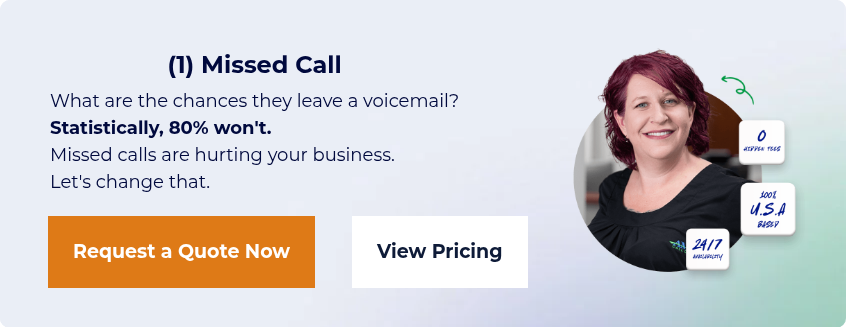12 Best EMR for Small Practices: Comparison, Reviews, Pricing (2026)
October 25th, 2025 | 9 min. read
By Aaron Boatin

You opened your practice to help patients, not to drown in software clicks. But here you are, three hours behind on charting, missing calls during busy hours, and watching new patients slip away because your front desk can't keep up.
I've helped practices ensure they're using the latest tech for decade—from pagers to medical answering services to EMRs. Trust me when I say: You won't need another list of the best EMRs.
The right EMR won't fix everything. But it can give you back time to actually practice medicine. Let's find one that fits your practice without breaking your budget or burning out your team.
What Small Practices Actually Need (In Plain English)
You don't need a hospital system. You need software that gets out of your way. Here's what matters:
Must-haves for any small practice:
- Easy to use: If it takes a month to learn, you don't have time for it.
- Fast, reliable support: When something breaks at 4 p.m. on Friday, you need a real person who picks up.
- Cloud-based: No servers to maintain, no IT department needed. Access from anywhere, automatic updates.
- ONC-certified: Required for federal incentive programs and proving your system meets basic standards.
- HIPAA-ready: Encrypted data, audit trails, Business Associate Agreements, role-based access controls.
- E-prescribing: Send prescriptions electronically with safety checks for allergies and interactions.
- Specialty templates: Charting shortcuts that fit how you actually document.
- Basic reporting: Track patient volumes, no-shows, common diagnoses without pulling your hair out.
- Billing or revenue cycle tools: Either built-in or easy integration so you get paid.
- Patient portal: Required by federal rules. Patients need to view results, request appointments, message you.
- Interoperability: Shares data with labs, imaging centers, hospitals, other providers.
Nice-to-haves that might matter:
- Telehealth built in: Saves you from juggling separate platforms.
- Mobile app: Chart on your phone or tablet between exam rooms.
- Custom forms: Intake questionnaires, consent forms that match your workflow.
- Robust analytics: Track quality measures, outcome data, population health if you're in value-based contracts.
The difference between must-have and nice-to-have? Must-haves keep your doors open legally and practically. Nice-to-haves make life easier but cost extra. Know which is which before you sign.
EMR vs EHR
People use these terms like they mean different things. Technically, an EMR is your digital chart—just your practice's records. An EHR shares data across organizations and systems. In practice? Most vendors call their products EHR even if they're really EMR. Don't get hung up on labels. Focus on whether the system does what you need.
Best EMRs for Small Practices (2026)
Here are realistic options for small teams. Each has trade-offs. None is perfect for everyone.
Practice Fusion — Best for budget-conscious primary care
Why it fits: Starts at around $149 per provider per month with basic features. Cloud-based, simple interface, good for straightforward primary care workflows. Offers a free version with limited features but ad-supported.
Watch-outs: Free version shows ads and lacks some key features. Paid tiers add up fast when you need e-prescribing, labs, and advanced charting. Customer support can be slow.
Pricing: Free (limited), or starting around $149/provider/month for paid plans.
Kareo (now Tebra) — Best for small practices needing strong billing
Why it fits: Combines clinical and practice management in one platform. Strong revenue cycle tools help you collect faster. Cloud-based, works on tablets, good for independent practices.
Watch-outs: Interface can feel dated in spots. Custom pricing means you have to request a quote. Some users report slow updates and occasional bugs.
Pricing: Custom pricing, typically $300–$500/provider/month depending on modules.
DrChrono — Best for iPad-first workflows
Why it fits: Built for iPad from the ground up. Custom templates, solid e-prescribing, integrated billing. Great if you want to chart on a tablet while you're with the patient.
Watch-outs: Higher cost than some competitors. Can get expensive if you add revenue cycle management, patient engagement tools, and custom integrations.
Pricing: Starts around $199/provider/month, goes up to $499+ with full features.
Elation Health — Best for primary care focused on patient relationships
Why it fits: Designed by primary care doctors for primary care workflows. Clean interface, strong documentation tools, good interoperability. Focuses on reducing clicks and improving physician satisfaction.
Watch-outs: Custom pricing. Not ideal for specialties outside primary care. Some billing features require add-ons or third-party integration.
Pricing: Custom pricing, typically $300–$500/provider/month.
AdvancedMD — Best for growing practices with complex billing
Why it fits: Full suite of EMR, practice management, and revenue cycle tools. Scales well as you add providers. Strong reporting and analytics.
Watch-outs: Expensive. Steeper learning curve. More features than a solo or two-person practice may need. Implementation takes time.
Pricing: $485–$729/provider/month depending on package.
CareCloud — Best for all-in-one platform with flexible pricing
Why it fits: Combines EMR, practice management, billing, and patient engagement. Customizable workflows, good support, cloud-based.
Watch-outs: Custom pricing only. Can feel overwhelming with so many features. Setup and training take several weeks.
Pricing: Custom, typically $300–$600/provider/month.
athenahealth — Best for automation and network efficiencies
Why it fits: Cloud-based with strong automation features and AI-driven workflows. Works well for practices that want to reduce repetitive tasks. Part of a large network that shares billing and clinical insights.
Watch-outs: Percentage-of-collections pricing can get expensive if your revenue is high. Less control over customization compared to other platforms.
Pricing: Typically 5–8% of collections, or flat monthly fees starting around $500+/provider.
CharmHealth — Best for low-cost full-featured option
Why it fits: Affordable pricing with solid features including telehealth, patient portal, e-prescribing, and billing. Cloud-based, ONC-certified, good for small practices on tight budgets.
Watch-outs: Smaller vendor means less robust support network. Some users report occasional downtime or slow response times.
Pricing: Starts around $110–$150/provider/month.
RXNT — Best for e-prescribing and pharmacy integration
Why it fits: Started as an e-prescribing platform, so that part works really well. Includes EMR, practice management, and billing tools. Cloud-based, affordable.
Watch-outs: Interface feels older compared to newer platforms. Limited customization for specialty workflows.
Pricing: Starts around $250/provider/month.
Amazing Charts — Best for simple, straightforward charting
Why it fits: Easy to learn, minimal clicks, good for providers who want fast documentation without a lot of bells and whistles. Works for small primary care and specialty practices.
Watch-outs: Lacks advanced features like robust telehealth or complex billing workflows. Smaller vendor with less frequent updates.
Pricing: Around $400–$500/provider/month.
SimplePractice — Best for behavioral health and solo therapists
Why it fits: Built specifically for mental health providers. Includes scheduling, telehealth, billing, and note templates designed for therapy workflows. Very user-friendly.
Watch-outs: Not suitable for medical practices outside behavioral health. Limited integration with labs and imaging.
Pricing: Starts around $29–$99/month for solo practitioners.
NextGen Office — Best for small practices wanting enterprise features
Why it fits: Customizable templates, robust reporting, integrates with many third-party systems. Good for practices that anticipate growth or have specialty-specific needs.
Watch-outs: Can be complex to set up and use. Higher cost. Requires more training than simpler systems.
Pricing: Custom pricing, typically $400–$600+/provider/month.
Comparison of EMRs
|
Vendor |
Best For |
Deployment |
ONC-certified |
E-Rx |
Patient Portal |
Telehealth |
Billing/RCM |
Interop/Integrations |
Pricing |
|
Practice Fusion |
Budget primary care |
Cloud |
Yes |
Yes |
Yes |
Add-on |
Basic/Add-on |
Limited |
Free (ads) or $149+/mo |
|
Kareo (Tebra) |
Strong billing |
Cloud |
Yes |
Yes |
Yes |
Yes |
Excellent |
Good |
$300–$500/mo custom |
|
DrChrono |
iPad workflows |
Cloud |
Yes |
Yes |
Yes |
Yes |
Good |
Good |
$199–$499+/mo |
|
Elation Health |
Primary care |
Cloud |
Yes |
Yes |
Yes |
Yes |
Good |
Excellent |
$300–$500/mo custom |
|
AdvancedMD |
Growing practices |
Cloud |
Yes |
Yes |
Yes |
Yes |
Excellent |
Excellent |
$485–$729/mo |
|
CareCloud |
All-in-one |
Cloud |
Yes |
Yes |
Yes |
Yes |
Excellent |
Good |
$300–$600/mo custom |
|
athenahealth |
Automation |
Cloud |
Yes |
Yes |
Yes |
Yes |
Excellent |
Excellent |
5–8% collections or $500+/mo |
|
CharmHealth |
Low cost |
Cloud |
Yes |
Yes |
Yes |
Yes |
Good |
Limited |
$110–$150/mo |
|
RXNT |
E-prescribing |
Cloud |
Yes |
Excellent |
Yes |
Add-on |
Good |
Good |
$250+/mo |
|
Amazing Charts |
Simple charting |
Cloud |
Yes |
Yes |
Yes |
Limited |
Basic |
Limited |
$400–$500/mo |
|
SimplePractice |
Behavioral health |
Cloud |
N/A |
No |
Yes |
Yes |
Good |
Limited |
$29–$99/mo solo |
|
NextGen Office |
Enterprise features |
Cloud/Server |
Yes |
Yes |
Yes |
Yes |
Excellent |
Excellent |
$400–$600+/mo custom |
How to Choose (Step-by-Step)
Don't just pick the one with the best marketing. Here's how to narrow it down.
1. Map your needs to a shortlist. Ask yourself:
- Do you need billing built in, or do you already have a separate billing service?
- Do you see patients virtually? Then telehealth needs to be included, not an expensive add-on.
- Do you use tablets in exam rooms, or are you at a desktop?
- Does your specialty need specific templates (cardiology, derm, ortho, mental health)?
- Are you solo, or do you have multiple providers sharing charts and schedules?
Based on those answers...
2. Shortlist three to five vendors that match
Demo and score. Book live demos. Don't just watch canned presentations. Ask to see real workflows:
- How many clicks to schedule an appointment?
- How long to document a routine visit?
- Can you pull up a patient chart in under five seconds?
- How fast does support respond when you submit a ticket?
- Do the templates match how you actually practice?
3. Take notes and price the packages they offer
Rate each system on usability, speed, and whether it feels like it was built for practices like yours.
Price the whole package. Monthly fees are just the start. Add up:
- Per-provider licenses
- E-prescribing fees (some charge extra)
- Patient portal and engagement tools
- Telehealth minutes or add-on modules
- Implementation and setup fees
- Data migration from your old system
- Training time and costs
- Ongoing support and maintenance
- Interfaces to labs, pharmacies, hospitals
Get it all in writing before you sign.
4. Check the risks.
Ask vendors:
- What's your uptime guarantee? If the system goes down, can you still see patients?
- Can I export my data if I leave? In what format?
- Do you provide audit trails and access logs for HIPAA compliance?
- Will you sign a Business Associate Agreement?
- Can I control who sees what with role-based permissions?
If a vendor won't answer clearly, keep looking.
Hidden Costs & Common Pitfalls
Vendors love to quote you a low monthly fee and bury the rest. Here's what to watch for:
Add-on modules. Telehealth, advanced reporting, patient texting, and custom forms often cost extra. Get a full feature list with prices.
Per-interface fees. Connecting to your lab, imaging center, or hospital system can cost $100–$500 per connection, per month.
E-prescribing fees. Some vendors charge per prescription sent. Others bundle it. Ask upfront.
Telehealth minutes. A few platforms charge per video minute or cap you at a certain number of visits per month.
Patient communication bundles. Text reminders, email campaigns, and two-way messaging may be billed separately.
Long contracts. Three-year agreements lock you in. Negotiate annually if you can, or at least get clear exit terms.
User caps. Some plans limit you to one or two users. If you add a provider or nurse, your bill jumps.
Read the fine print. If the pricing page says "contact us for a quote," assume it's higher than you hope.
Implementation Plan (Small Practice-Friendly)
You can't flip a switch and go live. Plan it out.
Days 1–30: Prep
- Clean up your patient data. Fix duplicate records, wrong phone numbers, missing info.
- Map your workflows. Write down your current process for scheduling, check-in, charting, checkout, billing.
- Set up user accounts and permissions. Decide who can see what.
- Import patient data from your old system (if you have one).
Days 31–60: Pilot
- Go live with one provider or one day per week. Don't switch everyone at once.
- Build your templates and note shortcuts.
- Test e-prescribing, lab orders, patient portal.
- Train front desk and clinical staff in small groups.
Days 61–90: Full launch
- Flip the switch for everyone.
- Monitor metrics daily: Are charts getting done on time? Are claims going out? Are patients complaining?
- Fix issues fast. Adjust templates, workflows, and training as you go.
Track what matters:
- Time to complete a chart (should go down after the learning curve)
- Days in accounts receivable (should stay stable or improve)
- No-show rate (good systems reduce this with reminders)
- Claim rejection rate (should drop with better coding tools)
If those numbers get worse after 90 days, something's wrong. Call your vendor or consider switching.
FAQs on EMRs
Is there a true free EMR for small practices?
Sort of. Practice Fusion has a free version, but it shows ads and limits features. You'll likely outgrow it fast. OpenEMR is open-source and free, but you need tech skills to set it up and maintain it. For most practices, paying for a real EMR saves more time than it costs.
Can I switch later without losing data?
Usually, yes. Federal rules require vendors to export your data in standard formats. But migrating is still a pain. You'll lose some customization, templates, and shortcuts. Before you commit, ask about data export options and what format you'll get. Make sure your new vendor can import it.
How long does a typical go-live take?
For small practices, plan on 30 to 90 days from contract signing to full launch. Simpler cloud systems can go live in two to four weeks. Complex setups with lots of integrations take longer. Don't rush it. A bad launch creates more problems than a slow one.
What certifications matter?
ONC certification means the EMR meets federal standards for meaningful use and interoperability. HIPAA compliance isn't a formal certification, but your vendor should sign a Business Associate Agreement and explain their security measures. If they won't, walk away.
Do I need separate practice management software?
Not if your EMR includes scheduling, billing, and reporting. Many modern EMRs bundle it all together. If your EMR is clinical-only, you'll need separate practice management software. That means double entry and integration headaches. Choose an all-in-one if you can.
Will telehealth cost extra?
It depends. Some EMRs include basic telehealth in their base price. Others charge per video visit, per provider, or require a separate module. Ask during your demo. If you do even a few virtual visits per week, telehealth should be included.
What if my internet goes down?
Cloud-based EMRs need internet to work. If your connection drops, you're stuck. Most vendors offer a "break-glass" offline mode that lets you access recent charts and document on paper until you're back online. Ask about this before you sign. Also, invest in a backup internet connection if uptime matters to your practice.
Keep Your Phones Covered While You Switch
Changing EMRs is stressful. Your front desk will be buried in training and troubleshooting. Calls will go unanswered. New patients will hang up.
That's where Ambs Call Center can help. We offer HIPAA-trained, US-based receptionists who can answer your phones while your team focuses on the transition. You can start with after-hours coverage or overflow during busy times, then scale up or down as needed.
We also offer AI options that handle routine calls like appointment scheduling and directions, so your staff can focus on the complex stuff. It's not one-size-fits-all. It's whatever keeps your patients happy and your team sane.
Ready to see what you're missing?
Aaron Boatin is President of Ambs Call Center, a virtual receptionist and telephone answering service provider. His passion is helping clients' businesses succeed. Melding high tech with high touch to provide the best customer service experience for clients is his core focus.







